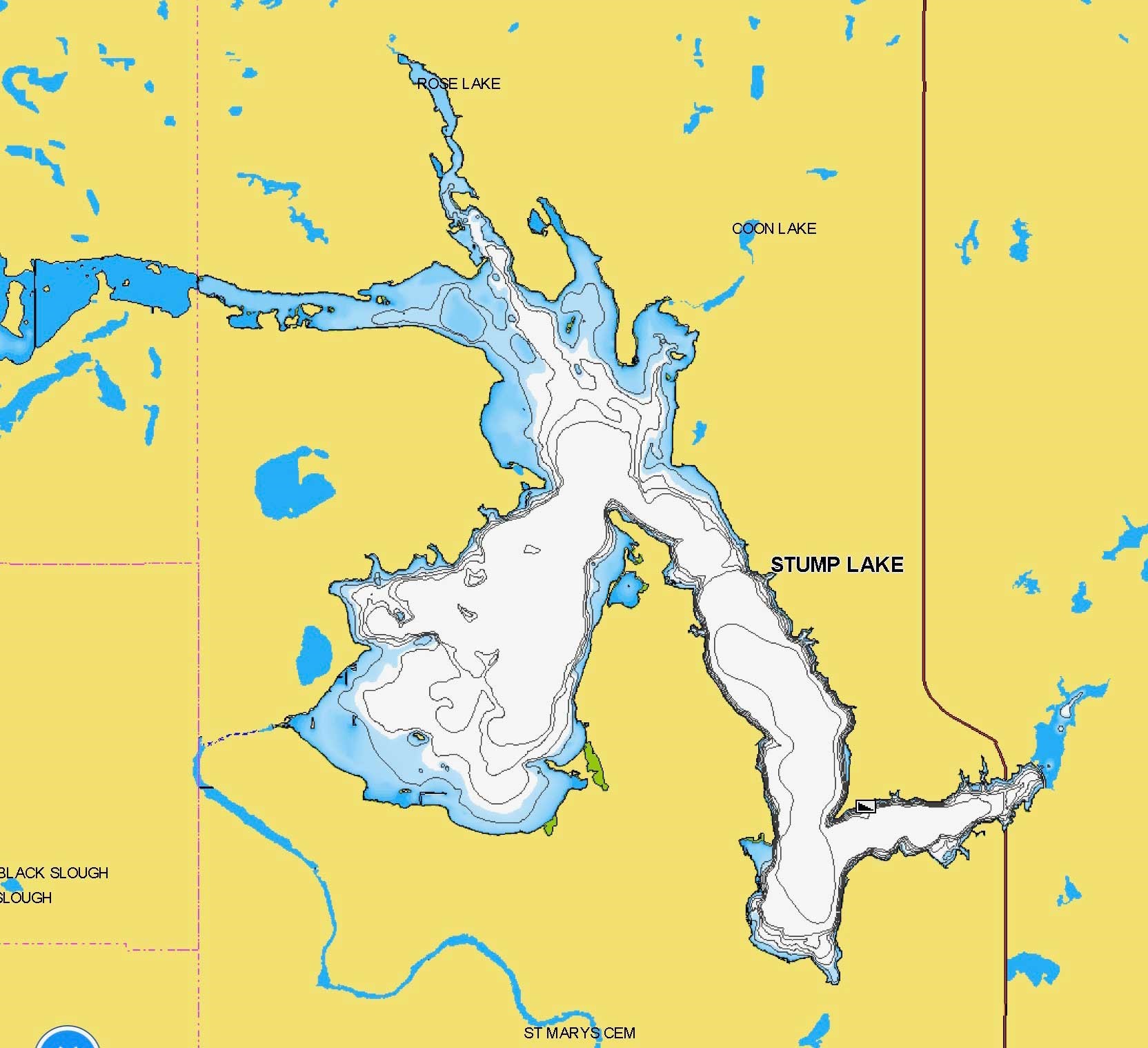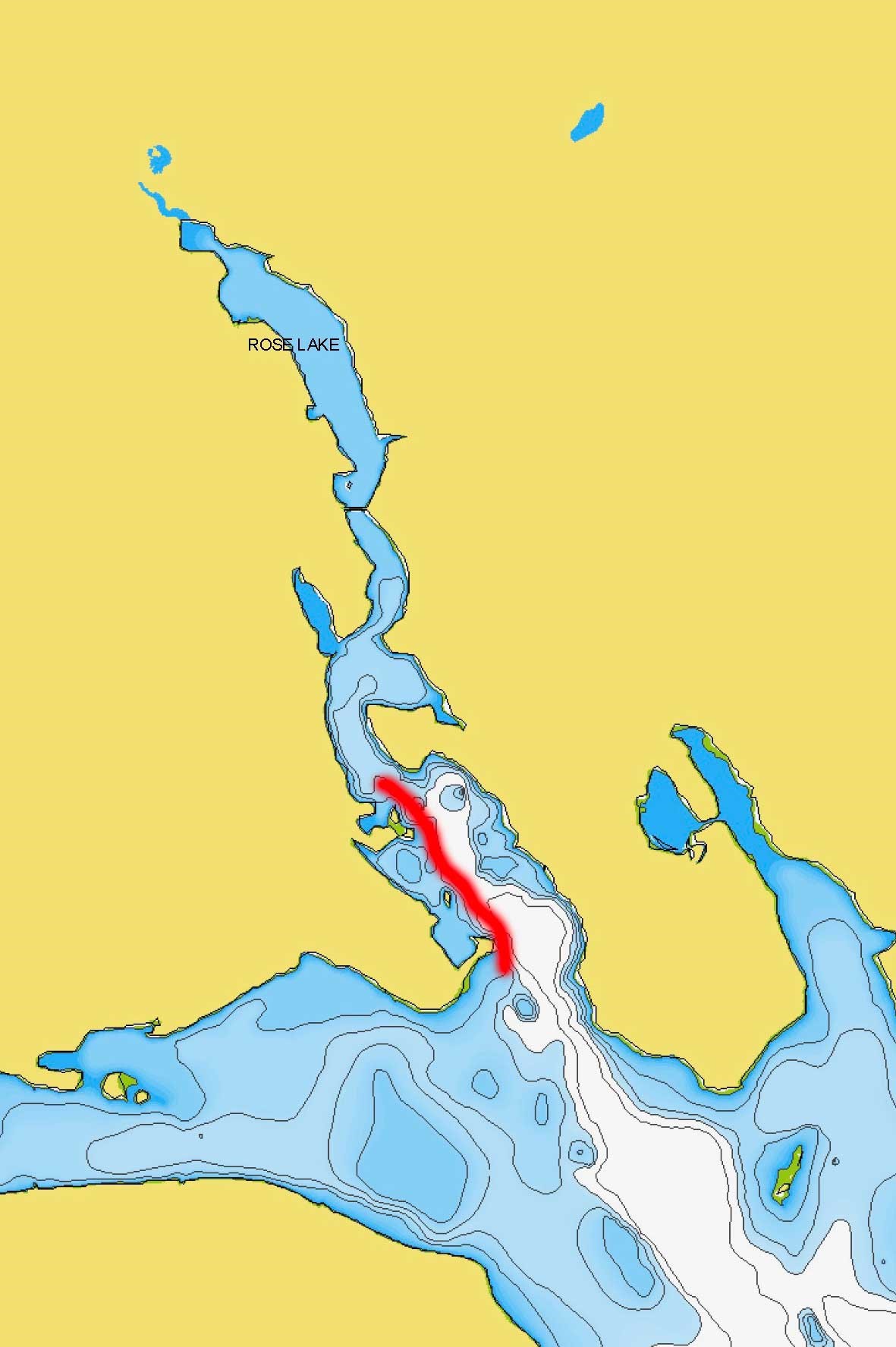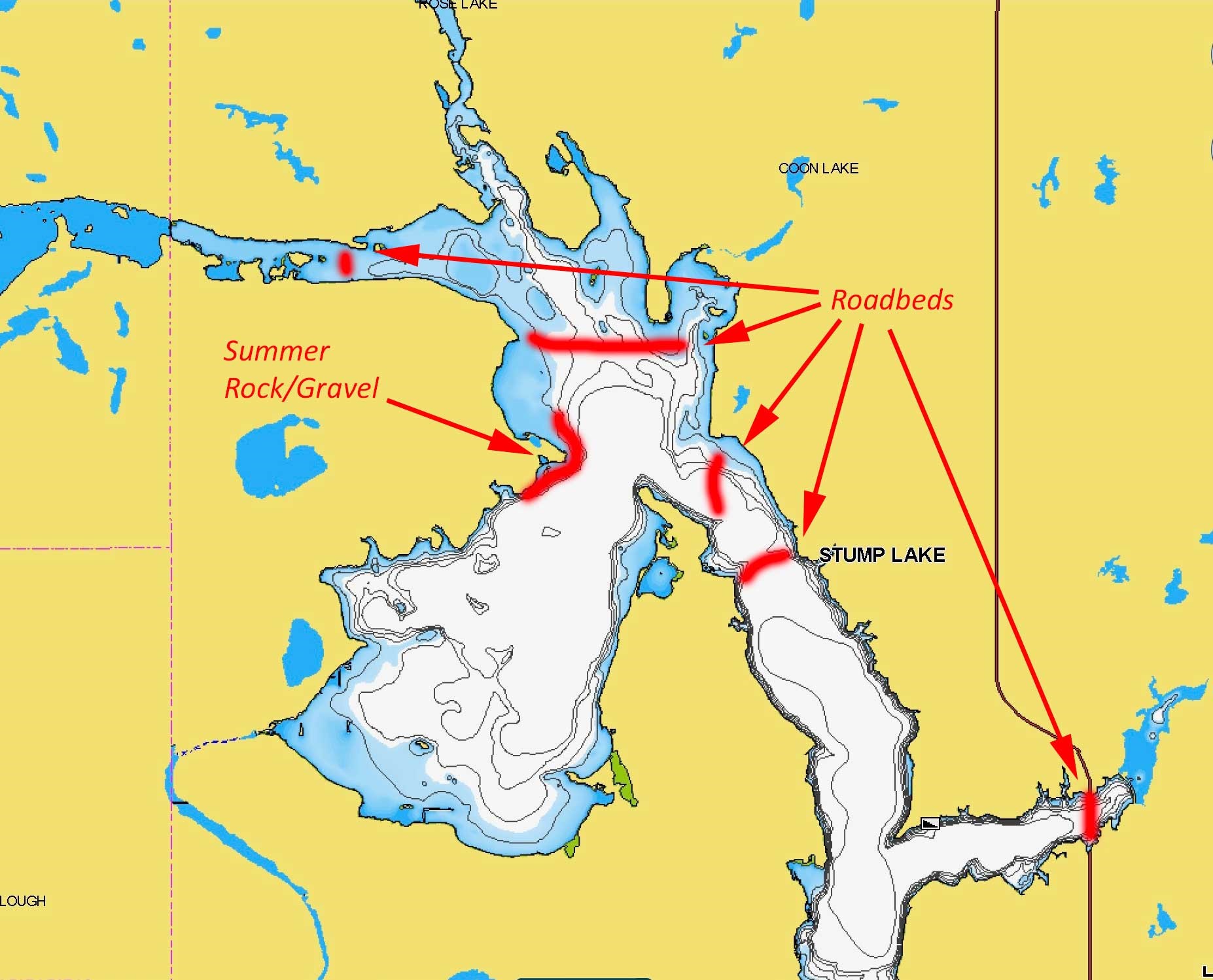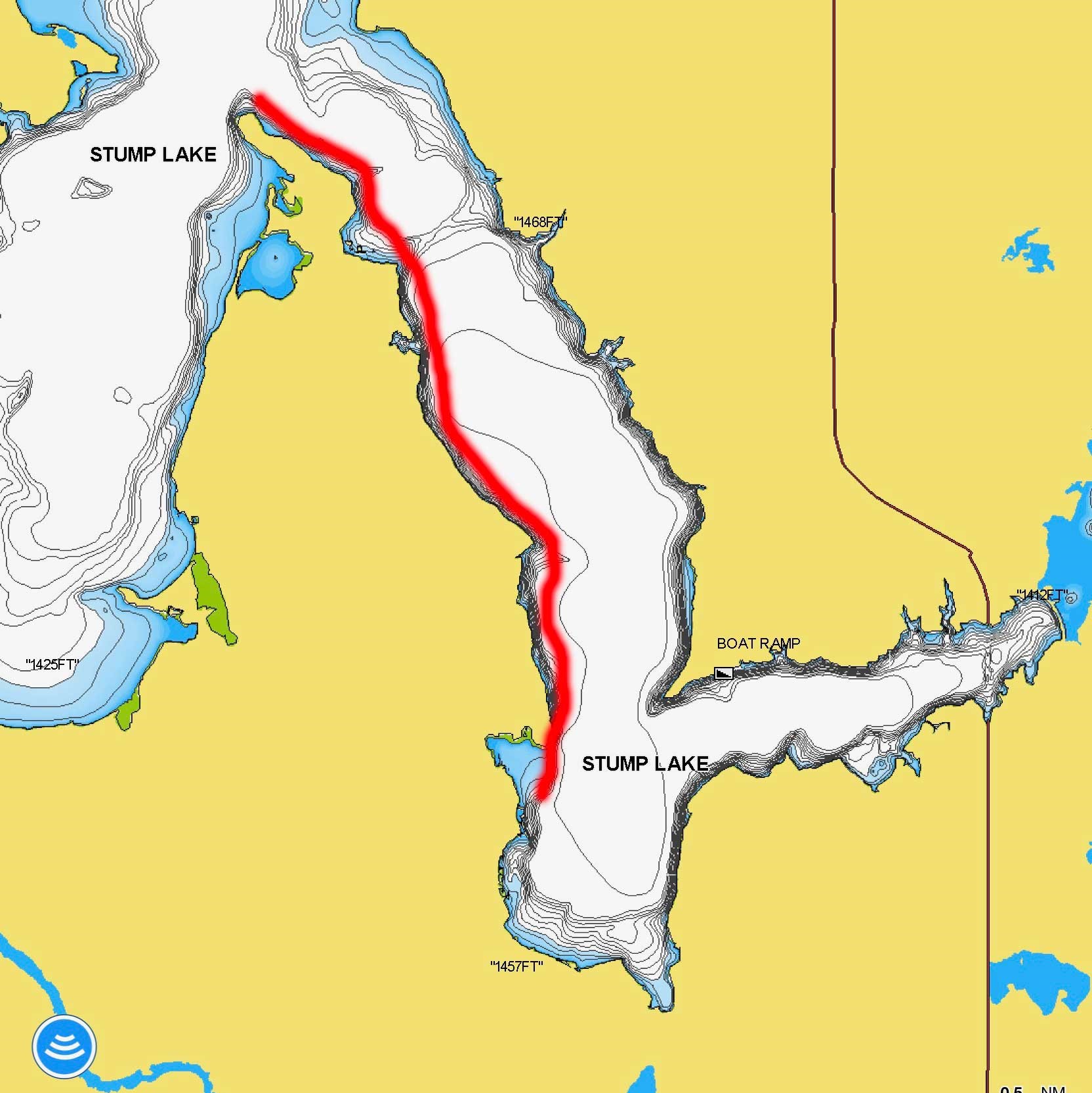
Stump Lake, in Nelson County, lies just east—and is connected to—Devils Lake. And while it may be smaller and less famous than its neighbor, the walleye action it offers is equal in every way.
Like Devils Lake, this body of water has no natural inlets or outlets and is fed by runoff from its surrounding area. At one time Stump was fairly shallow and salty, supporting only northern pike and a meager population of yellow perch. In the late 1990s and early 2000s, however, it came into its own when a massive influx of water caused Devils Lake to swell to the point it began to empty into Stump.
The smaller lake’s water level rose substantially, flooding fields, roadbeds, farmsteads, and acres of standing trees. The result is that, what was once essentially a catch basin, evolved into a vibrant 15,000-acre lake with an abundant forage supply—mostly freshwater shrimp—that supports thriving populations of walleyes, yellow perch, northern pike, and white bass. While all species are fair game for sport fishermen, walleyes are the primary target, especially during the open-water season.
Northland Fishing Tackle’s Cody Roswick, who owns and operates Fin-Hunters Guide Service guides anglers on waters in North and South Dakota, including Stump Lake. “It’s a unique fishery,” he says, “in that there is a lot of brush, trees, and flooded wood around the lake. You’ll also find a lot of rocks and rock piles, but very little weed growth. And along with natural structure, sunken roadbeds, stock ponds, old farm machinery, and buildings and foundations are scattered along the bottom.”
Anglers can access the water on the east shore at Stump Lake State Park, or on Tolna Bay about 3 miles north of the town of Tolna on Hwy. 24. And while Stump Lake is unique in its makeup, fishing tactics used for walleyes are straightforward. In the spring, after ice-out and the water has had a chance to warm up a bit, anglers generally focus on jigging shallow water—3- to 6-foot depths.

“From the time walleye anglers start fishing in the spring through late June, the casting bite is usually very good,” says Roswick, “especially when the water’s churned up a bit. You can catch fish on rock piles and a few roadbeds that are barely submerged, but for the most part, it’s all about casting to the shoreline and to structure that’s connected to the shore.”
The guide recommends a straight swimming retrieve close to the bottom with a 1/8- or 3/16-ounce RZ Jig and Impulse® Swim’n Grub body, or a similar size Mimic Minnow® Shad. “You don’t have to do a lot of popping or twitching,” he says. “Just a nice, steady swimming retrieve. Sometimes they’ll be more willing to chase and you can speed up a bit, but let them tell you what they want.”
White is a solid color choice, he adds, but firetiger and perch patterns produce as well.
There is a number of spots where anglers can connect with early ’eyes, but Roswick suggests starting on the west arm off the lake’s north end. “There’s a series of points that extend from the shore in that area as well as some roadbeds,” he explains, “and they all hold fish in the early season.”

As summer progresses and the water warms further, some walleyes migrate toward mid-lake rock piles and sunken roadbeds. Here, jigs, crankbaits, and slip-bobber rigs all produce. Many fish, however, take up residence in the lake’s abundant flooded timber. Now is when Roswick recommends heading to the eastern bay on the lake’s south end.

“The entire west shoreline of the bay is covered with standing oak trees out to about 30 or 35 feet,” he says, “and with good sonar equipment you can see walleyes in among the woody cover.”
Flooded timber demands a vertical presentation and the guide’s go-to method is to drop a 1/8- to ¼-ounce Weed-Weasel® Jig tipped with a leech or half of a nightcrawler. “The Weed-Weasel has a sturdy brush guard and a strong, stout hook,” he says, “which is essential when fishing the trees. They allow you to muscle a nice fish up and out of there before it has a chance to wrap around a limb. It’s a classic lure that’s perfect for this kind of fishing.”
A standard slip-bobber rig is another solid option for walleyes in the wood. Roswick recommends using a 1/16-ounce RZ Jig-and-leech (or half ’crawler) under a large Lite-Bite Slip Bobber. “I also pinch a split-shot onto the like above the jig,” he says. “The extra weight allows you to cast more accurately, and the bait drops faster and straighter through the trees.”
Stump Lake also features shallow flats, especially on its north end, and summer winds tend to drive walleyes into 10- to 12-foot depths. A good choice here is a trolling slow-death rig behind a bottom bouncer for these active fish. “Sometimes, however,” the guide explains, “a straight fish hook with a leech or half ’crawler works better. Experiment with both until the walleyes show a preference.”
At summer’s end and into the fall, Roswick recommends looking for walleyes on deeper main-lake humps and rock piles. While slow-dragging a large minnow on a live-bait rig is the late-season standard on many lakes, Roswick suggests a more active approach.
“Try jigging a Puppet Minnow®,” he says. “Just make a lap around the hump while continually pumping the lure.” Roswick goes big with this tactic, opting for a 9/16- or 1-ounce lure and fishing it aggressively with forceful 2-foot pumps.
“The fish are active now,” he says. “So I think of it like throwing a tennis ball for a retriever. They can’t help themselves; they just have to chase it.”
Lake maps courtesy of Navionics. For more information, visit: Navionics.com
Vital Stats
Stump Lake
Size: 15,742 acres
Max Depth: 118 feet
Ave Depth: 29.7 feet
Shoreline: 73.3 miles
Species Present: Walleyes, Northern Pike, Yellow Perch, White Bass

